Mastering Travel Photography: 20 Professional Tips for Stunning Shots
Table of Contents
Toggle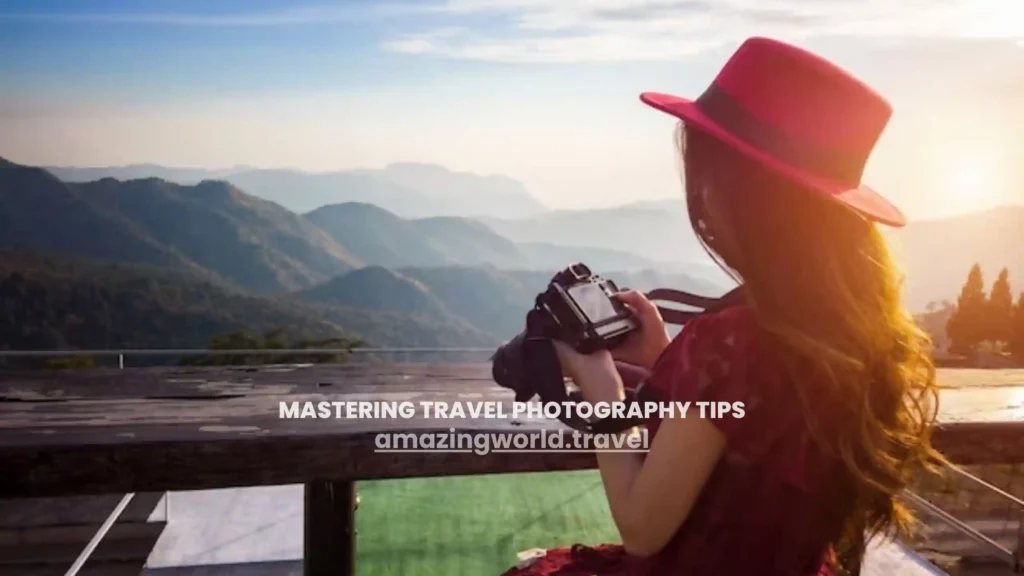
Embarking on a journey to master the art of travel photography is like setting foot on a path that winds through enchanting landscapes, vibrant cultures, and breathtaking moments frozen in time. As the sun dips below the horizon, casting a warm golden glow over ancient cityscapes or dappled forests, the allure of capturing these fleeting scenes becomes irresistible.
Whether you’re a seasoned photographer or an enthusiastic beginner, the allure of capturing stunning shots during your travels is universal. From the bustling streets of bustling metropolises to the tranquil serenity of remote villages, each location carries its own essence waiting to be immortalized through the lens.
In this article, we unveil a treasure trove of twenty professional tips that will transform your travel photography from ordinary to extraordinary. By the end of this journey, you’ll be armed with the knowledge to harness golden hours, master your camera’s intricacies, and artfully compose scenes that are both captivating and meaningful.
What is a Beautiful Shot?
In the realm of photography, beauty is subjective and multidimensional. A beautiful shot isn’t solely defined by technical precision but by its ability to evoke emotions, convey stories, and capture the essence of a moment.
It’s the interplay of composition, lighting, subject, and creativity that results in an image that resonates deeply with viewers. A beautiful shot transports people beyond pixels and lenses, connecting them to the emotions and experiences of the photographer.
What Makes a Great Travel Photo?
A great travel photo transcends geographical boundaries and cultural differences. It tells a story that goes beyond the visual, offering insights into the soul of a place. The magic of a great travel photo lies in the photographer’s skill to blend elements like composition, lighting, timing, and context.
It’s the fusion of technical prowess with a creative vision that transforms a mere snapshot into a captivating tale that transports viewers to distant lands, cultures, and emotions.
How Do You Capture a Beautiful Shot?
Capturing a beautiful shot requires a balance between technical know-how and artistic intuition. It’s not merely about pointing and clicking; it’s about immersing yourself in the scene, understanding its nuances, and translating its essence through your lens. To capture the beauty, embrace the following steps:
- Seek Inspiration: Observe your surroundings with an open mind and find inspiration in the ordinary.
- Composing Creatively: Experiment with framing, angles, and perspectives to add depth and uniqueness.
- Chasing Light: Understand how different lighting conditions impact your subject and adapt accordingly.
- Telling a Story: Infuse your image with narrative by capturing a moment that tells a story.
- Eliciting Emotion: Aim to evoke emotions that resonate with viewers, whether it’s joy, nostalgia, or wonder.
List of 20 Professional Photography Tips for Stunning Shots
1. Planning for Success
Golden Hour Magic: The golden hour, that magical window shortly after sunrise and before sunset, is a coveted time for photographers. The angle of the sun during these hours creates soft, warm, and diffused light that lends a breathtaking quality to your photographs. Here’s how you can make the most of it:
- Preparation is Key: To capture the essence of the golden hour, plan your shoots in advance. Use tools like smartphone apps or online calculators to determine the exact timing of sunrise and sunset for your location.
- Early Arrival: Arrive at your chosen location well before the golden hour begins. This gives you ample time to set up your equipment, frame your shots, and make any necessary adjustments.
- Landscape Glory: Landscapes during the golden hour are bathed in a radiant, golden light. The softness of the light enhances textures, adds depth, and paints scenes with warm hues.
- Portrait Perfection: For portraits, this lighting is a boon. The gentle, flattering illumination minimizes harsh shadows and creates a natural, ethereal glow on subjects’ faces.
- Creativity Unleashed: The golden hour allows for creativity. Experiment with silhouettes, long shadows, and lens flares to add artistic elements to your shots.
Mastering the golden hour takes practice, but the results are well worth the effort. By harnessing this unique lighting, you’ll elevate your travel photography to new heights, capturing scenes that are both enchanting and mesmerizing.
2. Know About Your Camera

Gear Familiarity: Your camera is more than a tool; it’s an extension of your creative vision. Understanding your camera inside out empowers you to make split-second decisions that result in compelling shots. Here’s how to become intimately acquainted with your gear:
- Manual Exploration: Dive into your camera’s manual. While it might seem daunting, this resource offers valuable insights into every button, dial, and menu option.
- Hands-On Practice: The best way to learn is through practice. Experiment with different settings in various conditions to see how they affect your images.
- Modes Demystified: Explore different shooting modes like manual, aperture priority, and shutter priority. These modes offer varying degrees of control over settings, helping you adapt to different scenarios.
- Online Resources: Leverage online tutorials and forums tailored to your camera model. These platforms offer practical tips, troubleshooting advice, and insights from experienced photographers.
- Workshops and Seminars: Consider attending workshops or seminars conducted by camera manufacturers or photography schools. These immersive experiences provide hands-on guidance and networking opportunities.
When you intimately understand your camera’s capabilities, adjusting settings becomes second nature. This knowledge allows you to focus on composition, storytelling, and capturing the essence of your travel destinations without being hindered by technical uncertainties.
3. Researching Your Destination

Iconic Insights: Researching your travel destination goes beyond knowing its famous landmarks; it’s about understanding its cultural nuances, local events, and hidden gems. Here’s how thorough research can transform your photography:
- Local Knowledge: Dive into travel guides, blogs, and documentaries to gain insights into the destination’s history, traditions, and unique attributes.
- Google Earth: Use satellite imagery and street view tools to virtually explore your destination. Identify potential vantage points and viewpoints for your shots.
- Social Media: Explore hashtags related to the destination on platforms like Instagram. This provides a real-time glimpse into what’s capturing people’s attention at the moment.
- Interact Locally: Engage with locals online through forums or social media groups. Their firsthand experiences and recommendations can guide you to lesser-known spots.
- Cultural Awareness: Understanding cultural sensitivities helps you capture respectful and authentic photographs that reflect the essence of the place.
Armed with a wealth of knowledge, you’ll arrive at your destination ready to capture not only its iconic attractions but also the nuanced moments that define its character.
4. Packing Smart and Light

Versatile Choices: Choosing camera gear that strikes a balance between quality and convenience is a critical aspect of successful travel photography. Here’s how to pack smart and light:
- Essential Lenses: Select a versatile range of lenses to cover various scenarios. A wide-angle lens is great for landscapes, a standard zoom lens for general use, and a prime lens for low-light situations.
- Camera Body: Opt for a lightweight yet capable camera body. Mirrorless cameras are popular choices due to their compact size and advanced features.
- Accessories: Pack essentials like spare batteries, memory cards, a tripod, and lens cleaning equipment. Consider a travel tripod for stability without excessive weight.
- Weather Protection: Depending on your destination, include weather-resistant gear to ensure your equipment remains functional in adverse conditions.
- Minimalist Approach: Embrace a minimalist mindset. Carrying too much gear can be cumbersome and distract from the creative process.
By selecting gear that caters to various shooting scenarios while remaining lightweight, you’ll be prepared to capture stunning shots without the burden of excess equipment.
5. Capturing Authentic Moments

Candid Connection: Authentic travel photography goes beyond capturing static scenes; it aims to convey the spirit and essence of a place. Achieving this requires immersing yourself in the local environment and capturing genuine, unscripted moments:
- Observational Skills: Observe the interactions, emotions, and activities around you. Anticipate moments that unfold naturally and tell a story.
- Engage with Locals: Interact with the people you encounter. Establishing a connection often leads to more relaxed and genuine expressions in your photographs.
- Unscripted Scenes: Seek out daily life occurrences, cultural celebrations, and local traditions. These candid moments offer a window into the heart of a destination.
- Documentary Approach: Approach your photography with a documentary mindset. Rather than orchestrating shots, let the scenes unfold naturally, capturing the genuine essence of the location.
By connecting with your surroundings and capturing authentic moments, your travel photographs will resonate with viewers on a deeper level, offering them a genuine glimpse into the places you’ve explored.
6. Enhancing Visual Appeal with Filters
Polarizing Filters: Filters are valuable tools that can elevate the visual impact of your photographs by controlling light, reflections, and colors. A polarizing filter, in particular, offers several benefits:
- Reduced Reflections: By minimizing reflections on water, glass, or other reflective surfaces, a polarizing filter allows viewers to see clearly into the scene.
- Enhanced Colors: The filter intensifies colors, particularly in the sky and foliage, creating a more vibrant and visually engaging image.
- Contrast Control: A polarizer boosts the contrast between the sky and clouds, adding drama and depth to your photographs.
- Sky Enhancement: When shooting landscapes, the filter can make the sky appear richer in color, providing a striking backdrop for your compositions.
- Glare Management: It’s especially useful when shooting in bright sunlight, as it reduces glare and allows you to capture details that might otherwise be lost.
When using a polarizing filter, adjust its orientation to achieve the desired effect. Keep in mind that using filters requires practice and experimentation to fully grasp their impact on your shots.
7. Mastering Composition Techniques

Guided Balance: Composition is the backbone of a captivating photograph. Mastering composition techniques allows you to create visually compelling images that draw viewers into your scenes:
- Rule of Thirds: Divide your frame into a 3×3 grid, placing key elements along the lines or at their intersections. This creates a balanced composition that’s visually engaging.
- Leading Lines: Use lines within your frame to guide the viewer’s eye. Leading lines can be roads, rivers, or any linear element that directs attention toward the main subject.
- Framing: Incorporate natural elements like arches, doorways, or branches to frame your subject. This technique adds depth and context to your photographs.
- Symmetry and Patterns: Symmetry creates a sense of harmony, while patterns add visual interest. Look for scenes where symmetry or repetition can enhance your composition.
- Negative Space: Don’t fill every inch of your frame. Leaving negative space around your subject emphasizes it and creates a sense of openness.
By practicing these composition techniques, you’ll be able to create images that are not only visually appealing but also convey your intended message effectively.
8. Embracing Weather Challenges
Dramatic Effects: Adverse weather conditions shouldn’t deter you from capturing breathtaking photographs. In fact, weather challenges can lead to dramatic and unique shots:
- Rain and Reflections: Raindrops on surfaces create interesting reflections. Use umbrellas, rain jackets, or even plastic bags to protect your gear while shooting in the rain.
- Fog and Mystique: Fog adds an air of mystery and softens the background, making subjects stand out. Look for landscapes or cityscapes that gain depth through fog.
- Snowy Landscapes: Snow transforms scenes, making them serene and ethereal. Adjust your exposure settings to prevent overexposing the white snow.
- Stormy Skies: Storm clouds can add drama to your photographs. Wide-angle shots that include stormy skies can convey a sense of power and impending change.
Remember to protect your equipment from extreme weather conditions using appropriate gear, such as rain covers or protective cases. Embracing the elements can yield unique shots that stand out from the ordinary.
9. Crafting a Narrative with Photos

Sequential Storytelling: A series of photographs can weave together a compelling narrative of your travel experiences. Here’s how to craft a visual story that engages viewers and takes them on a journey:
- Identify Themes: Determine the overarching themes of your travel story. It could be about exploring a new culture, capturing local cuisine, or showcasing architectural wonders.
- Beginnings and Endings: Start with an establishing shot that sets the scene. Include a closing shot that provides closure or leaves viewers with a question, encouraging them to explore further.
- Transitions: Use transitional shots that bridge the gap between different locations or events. These shots help the story flow seamlessly.
- Emotion and Detail: Capture moments that evoke emotions or reveal intricate details. These shots add depth and authenticity to your narrative.
- Vary Perspectives: Experiment with different angles and focal lengths to provide a diverse visual experience. Wide shots capture the scene, while close-ups reveal nuances.
By carefully curating a series of photographs, you’re able to create a story that resonates with viewers, transporting them to the heart of your travel experiences.
10. Getting Up Close with Details
Texture Exploration: Delving into the small details of a destination can yield powerful and captivating photographs. Here’s how to effectively capture textures and patterns:
- Macro Photography: Utilize macro lenses or settings to photograph intricate details up close. This could include the texture of tree bark, the delicate petals of a flower, or the roughness of a stone wall.
- Texture as Narrative: Focus on textures that are culturally significant or emblematic of the location. The texture of a handwoven textile or the weathered facade of a building can tell a story.
- Composition Matters: Pay attention to composition even in close-up shots. The rule of thirds, leading lines, and negative space still play a role in creating a balanced image.
- Light and Shadows: Lighting is crucial for capturing textures effectively. Side lighting or diffused natural light can enhance the details and create depth.
Exploring textures and patterns offers a fresh perspective on a destination, allowing you to showcase its uniqueness in a visually engaging way.
11. Adding a Human Touch

Human Element: Incorporating people into your travel photographs adds a relatable and emotive dimension to your storytelling. Here’s how to effectively include the human element:
- Contextualize the Scene: People in your photos provide a sense of scale and context. They show how locals interact with their environment and give viewers a point of reference.
- Expressive Moments: Capture candid expressions, gestures, and interactions. These moments convey emotions and offer insight into the daily lives of the people you encounter.
- Portraits with a Story: Ask permission before taking someone’s portrait. Portraits can offer a glimpse into the subject’s personality and evoke empathy from viewers.
- Environmental Portraits: Instead of isolating your subject, include elements of their surroundings. This provides additional context and visual interest.
- Narrative Interaction: Show people engaged in activities that reveal their connection to the location. Whether it’s a craftsman at work or a street performer entertaining a crowd, these shots tell stories.
By including people in your photographs, you breathe life into your travel stories, making them relatable and evocative.
12. Exploring Reflections
Reflective Charm: Utilizing reflections in your travel photography can create captivating and visually striking images. Here’s how to make the most of reflections:
- Water Reflections: Calm bodies of water, such as lakes, rivers, or ponds, provide mirror-like surfaces that reflect landscapes or architecture. Use a polarizing filter to reduce glare and enhance reflections.
- Urban Reflections: Glass windows, shiny surfaces, and puddles after rain can serve as reflective elements in urban environments. Look for opportunities to capture cityscapes with doubled impact.
- Symmetry and Balance: Reflections can create symmetry in your compositions, enhancing visual harmony. Experiment with positioning your subject in a way that aligns with its reflection.
- Foreground Reflections: Incorporate reflections in the foreground to add depth and layers to your images. This can create a multi-dimensional effect that draws viewers in.
Exploring reflections adds a creative twist to your travel photography, resulting in images that play with light, symmetry, and visual intrigue.
13. Patience Pays Off
Crowd-Free Shots: Patience is a virtue in travel photography, especially when you’re aiming to capture iconic landmarks or popular attractions without the distraction of crowds. Here’s how patience can lead to stunning, crowd-free shots:
- Off-Peak Hours: Research and visit popular spots during off-peak hours. Early mornings or late afternoons often offer quieter moments to capture your subjects without the hustle and bustle of tourists.
- Wait it Out: If you’re set on capturing a particular scene, find a vantage point and wait for the right moment. Patience can lead to a shot that’s devoid of crowds and distractions.
- Post-Processing Magic: In cases where it’s impossible to avoid crowds, consider using post-processing techniques to remove or minimize them, ensuring the focus remains on your subject.
By exercising patience and strategic timing, you’ll be able to create photographs that showcase iconic places in their serene and uncluttered beauty.
14. Playing with Shutter Speeds

Motion Magic: Shutter speed plays a crucial role in controlling motion within your photographs. Experimenting with different shutter speeds can lead to creative and dynamic results:
- Long Exposures: Use slow shutter speeds to capture motion blur. This technique is ideal for photographing flowing water, moving vehicles, or bustling cityscapes.
- Freezing Action: On the other hand, fast shutter speeds freeze action, capturing subjects in sharp detail. This is great for photographing fast-moving subjects like wildlife or sports events.
- Panning: Panning involves tracking a moving subject with your camera while using a slow shutter speed. This technique keeps the subject sharp while blurring the background, conveying a sense of motion.
- Light Trails: Capture light trails from vehicles in low-light situations. This technique can result in mesmerizing, abstract patterns that add a sense of energy to your images.
By mastering shutter speed techniques, you gain greater control over the mood and dynamics of your photographs, resulting in images that convey movement and emotion.
15. Eliciting Emotion in Photos
Emotive Moments: Travel photography is not just about capturing scenes; it’s about evoking emotions and immersing viewers in the atmosphere of a place. Here’s how to capture photos that resonate emotionally:
- Observational Awareness: Pay attention to moments that elicit emotions—laughter, awe, contemplation. Be ready to capture these fleeting instances that convey the spirit of a location.
- Human Connection: Emotions often shine through in people’s expressions and interactions. Whether it’s a child’s curiosity or an elder’s wisdom, focus on these genuine moments.
- Local Culture: Immersing yourself in local traditions, festivals, and events allows you to capture the raw emotions of the participants, offering a deeper understanding of their world.
By capturing moments that stir feelings within you and your viewers, your travel photography becomes a powerful means of storytelling.
16. Showcasing the Sky’s Beauty

Sky as Canvas: The sky is a dynamic and ever-changing canvas that can add depth, drama, and mood to your photographs. Here’s how to showcase the sky’s beauty in your travel shots:
- Timing is Everything: Pay attention to the sky’s color and conditions. Sunrise and sunset often provide stunning color palettes and soft, diffused light.
- Wide-Angle Perspective: Incorporate the sky as a prominent element in your compositions. Use wide-angle lenses to capture vast expanses of sky that complement your foreground subject.
- Dramatic Clouds: Cloud formations can add drama to your scenes. From wispy cirrus clouds to towering cumulonimbus, clouds contribute to the atmosphere of your photographs.
- Long Exposures: Experiment with long exposures during twilight to capture streaks of color and the transition between day and night. This technique can yield mesmerizing results.
By treating the sky as a central element in your compositions, you add depth and atmosphere to your travel photographs, creating images that are both captivating and visually impactful.
17. Post-Processing Techniques
Refined Finishes: Post-processing is a crucial step in enhancing the quality of your travel photographs. Here’s how to use post-processing techniques effectively:
- Software Selection: Choose a photo editing software that aligns with your skill level and needs. Adobe Lightroom and Photoshop are popular choices offering a wide range of editing tools.
- Color Correction: Adjust colors to achieve a balanced and natural look. Fine-tune saturation, contrast, and white balance to enhance the overall appeal of your images.
- Exposure Adjustment: Correct exposure issues, whether your photo is too bright or too dark. Balancing exposure ensures that your subjects are well-lit and details are visible.
- Selective Editing: Use masking techniques to selectively edit specific areas of your image. This allows you to enhance details without affecting the entire photo.
- Preserve Realism: While editing can enhance your images, avoid overdoing it. Strive for a natural appearance that respects the authenticity of the scene.
Post-processing should complement your original vision, enhancing the quality of your travel photographs while maintaining their authenticity.
18. Respecting Local Cultures

Cultural Sensitivity: Travel photography offers a window into different cultures and ways of life. It’s crucial to approach this with respect, empathy, and cultural awareness:
- Ask for Permission: When photographing people, especially in intimate settings, ask for permission first. This shows respect for their privacy and dignity.
- Research Customs: Understand the cultural norms and taboos of the place you’re visiting. This ensures that your actions and photographs do not inadvertently offend or disrespect.
- Build Connections: Engage with locals before pulling out your camera. Building relationships allows you to capture authentic moments that reflect the true essence of their lives.
- Avoid Exploitation: Avoid photographing sensitive subjects or vulnerable individuals without proper context and sensitivity.
- Share Stories: Accompany your photos with stories that provide context and understanding, shedding light on the people and cultures you’ve encountered.
By approaching your travel photography with cultural sensitivity, you contribute to a more meaningful and respectful portrayal of the places you visit.
19. Discovering Unexplored Angles
Fresh Perspectives: Capturing a destination from unique angles can provide fresh and captivating perspectives. Here’s how to discover unexplored angles in your travel photography:
- Change Your Height: Experiment with different heights—get low to the ground for a unique foreground perspective or climb to a higher vantage point for an expansive view.
- Observe Lines and Shapes: Look for lines, shapes, and patterns that can guide your composition. These elements can lead the viewer’s eye and add visual interest.
- Negative Space Exploration: Incorporate negative space intentionally to highlight your subject. This approach can create a minimalist and impactful composition.
- Close-Ups and Wide Shots: Switch between close-ups and wide shots to capture the same subject from contrasting perspectives. This offers a dynamic portrayal of the scene.
- Frame within a Frame: Use architectural elements, natural frames, or objects to frame your subject within the composition. This technique adds depth and context.
Exploring different angles allows you to present familiar scenes in a new light, engaging viewers with your unique vision.
20. The Journey of Improvement
Continuous Learning: Travel photography is a journey of constant improvement. Embrace learning as an ongoing process to refine your skills and evolve as a photographer:
- Critique Your Work: Regularly assess your own photographs with a critical eye. Identify areas where you excelled and aspects that can be improved.
- Seek Feedback: Share your work with fellow photographers, mentors, or online communities. Constructive feedback offers new insights and perspectives.
- Experiment and Grow: Don’t be afraid to step out of your comfort zone. Experiment with new techniques, styles, and genres to expand your creative horizons.
- Learn from Masters: Study the works of renowned travel photographers. Analyze their compositions, use of light, and storytelling techniques for inspiration.
- Document Your Progress: Keep a visual record of your journey, showcasing how your skills have evolved over time. This can be motivating and inspiring.
Embracing the journey of improvement ensures that your travel photography continues to evolve, resulting in images that are increasingly impactful and compelling.
Conclusion
In the intricate realm of travel photography, beauty is more than pixels—it’s the embodiment of emotions, narratives, and experiences. These 20 professional tips are your compass, guiding you through the art of capturing stunning shots that transcend time and space.
As you embark on your photographic journey, remember that the pursuit of improvement is as invaluable as the images you create.
How much did you like Our detailed Travel Photography? Review Also, please share these Blogs with your friends on social media.
Related Article –
- Road Trips Ideas | 12 Tips to Prepare Your Car for a Long Road Trip?
- 150 Best Places to Visit in the United States In 2023
- Road Trip With Kids
- How to Stay Awake While Driving Long Distances
- Audiobooks to Listen to On Your Road Trip
- How to Create an Epic Itinerary Road Trip
- Best Rental Cars For Travel Adventures
Travel Photography FAQs
What camera gear should I carry for travel photography?
Prioritize lightweight, versatile equipment like a mirrorless camera body and a couple of lenses to ensure mobility without compromising quality.
How can I enhance colors and contrast in post-processing?
Utilize photo editing software to adjust color saturation, contrast, and clarity. Be cautious not to overdo it, maintaining a natural look.
Is it okay to photograph people in unfamiliar cultures?
Always approach photography with respect. Ask for permission before taking pictures of people, especially in culturally sensitive settings, and engage with empathy and cultural awareness.

Meet David Hoper, a passionate travel Blog writer with 7+ years of experience in travel content. Through his exemplary storytelling and engaging narratives, he shares his experiences and brings destinations to life. With a keen eye for detail and a love for exploration, he has cultivated a diverse portfolio of travel blogs that inspire and inform readers worldwide.
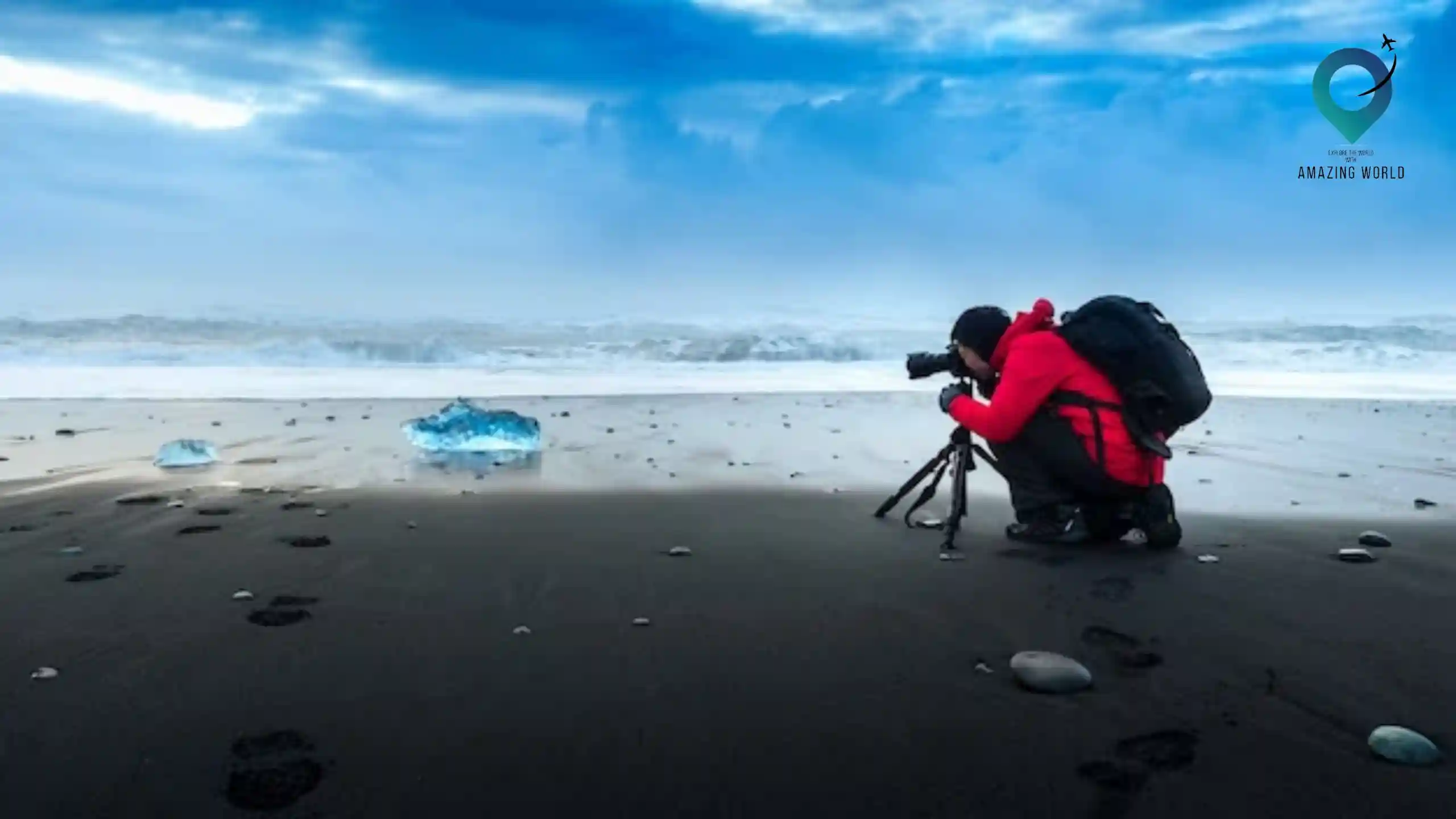

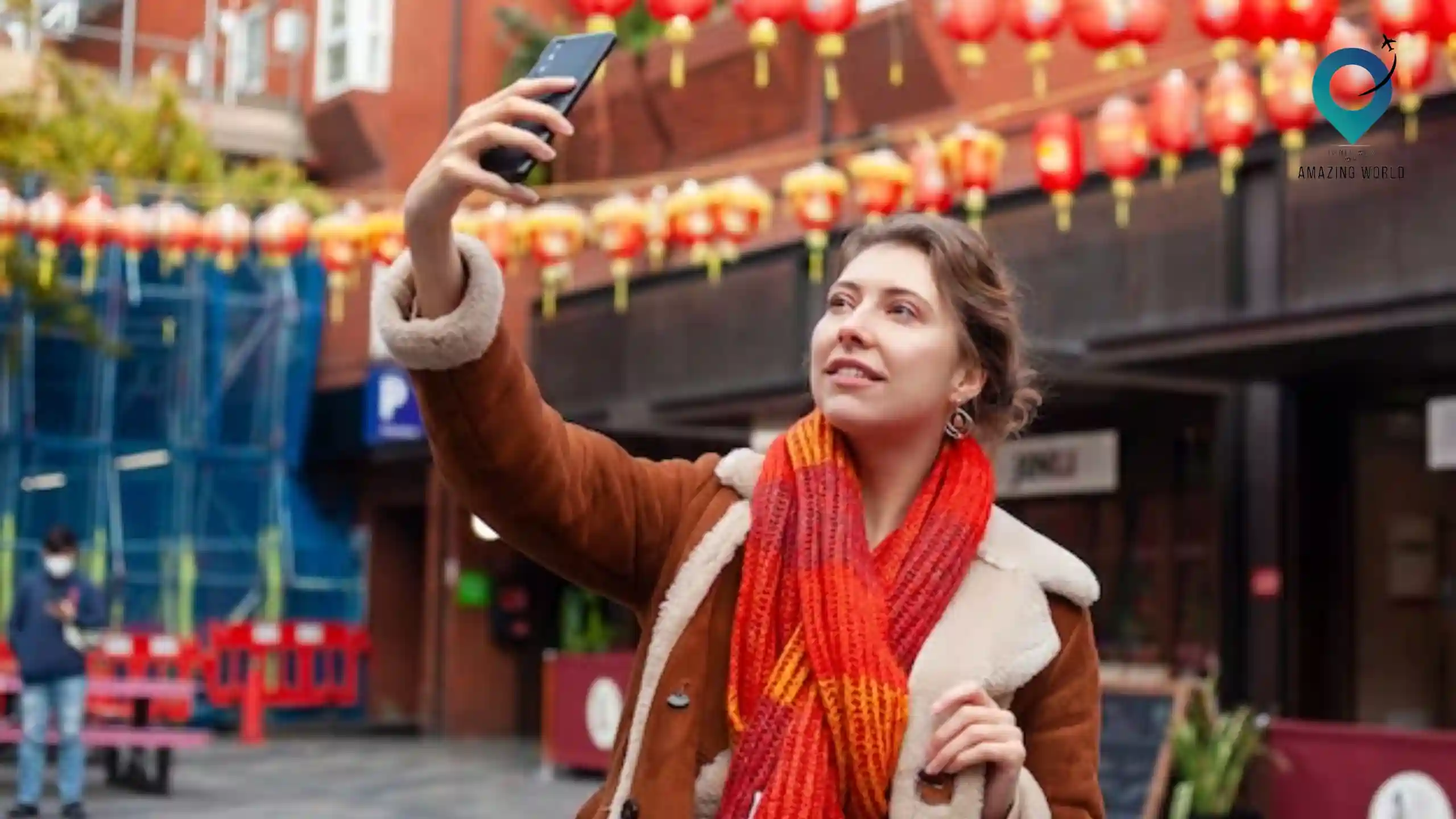
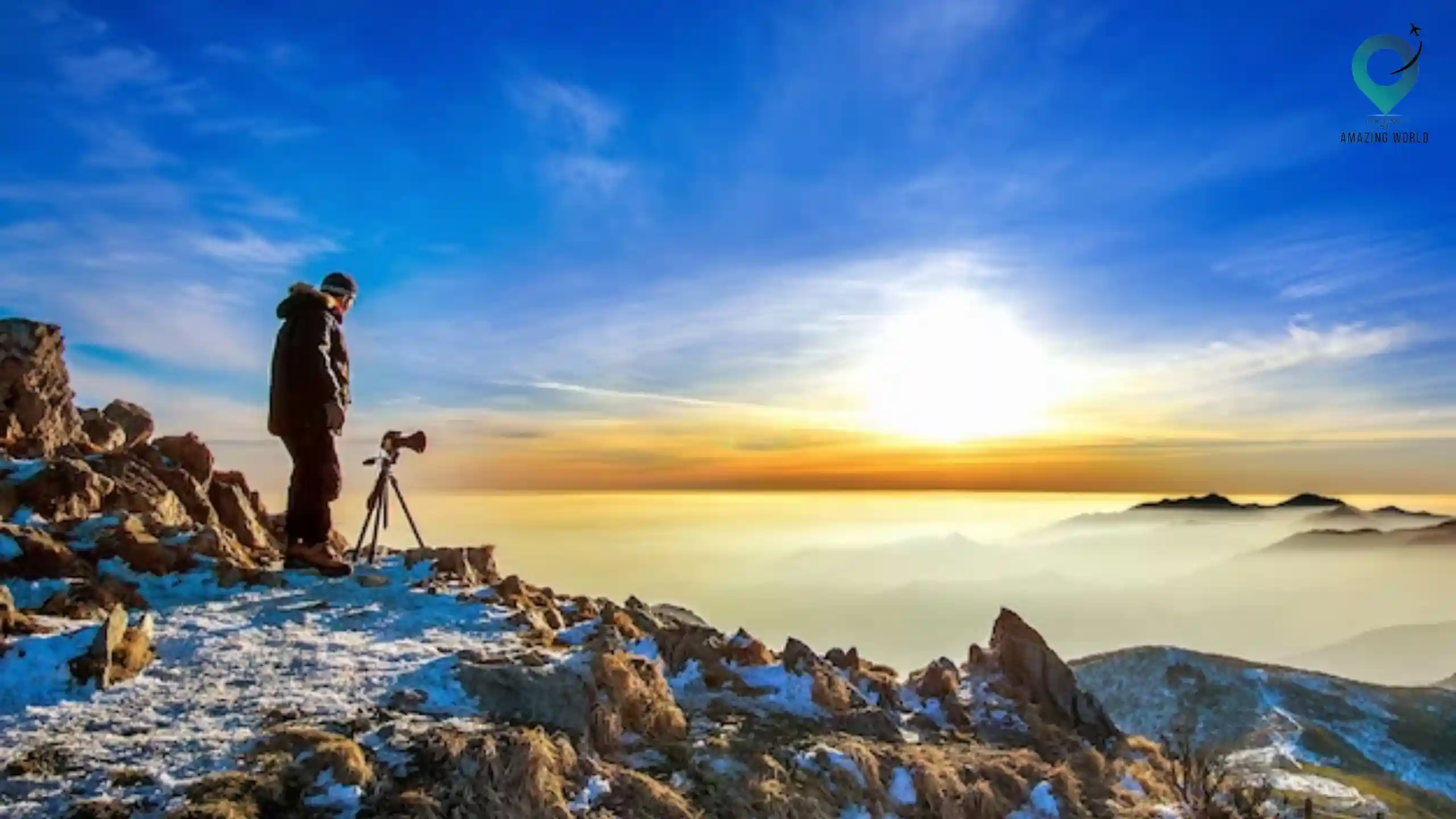

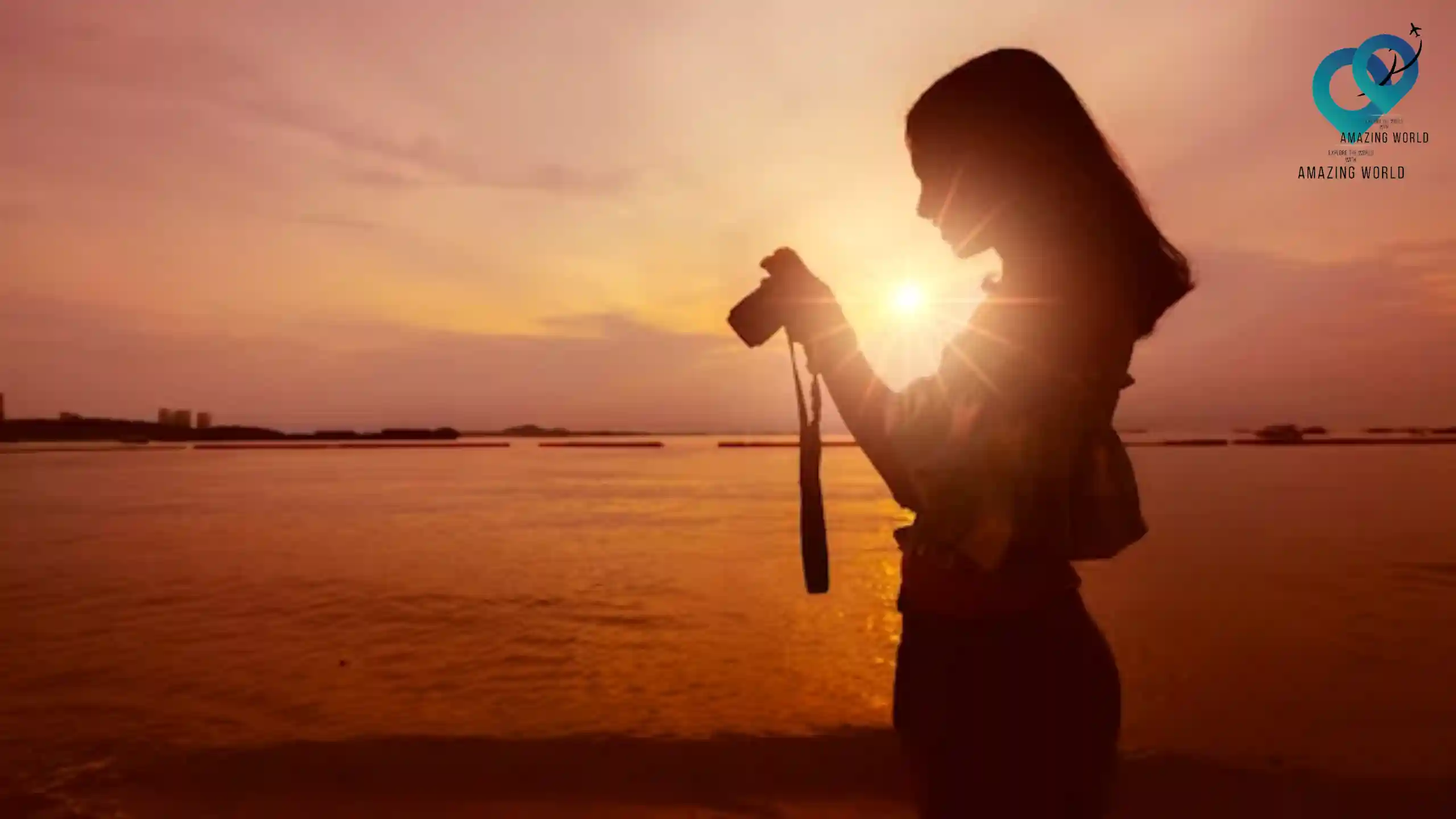
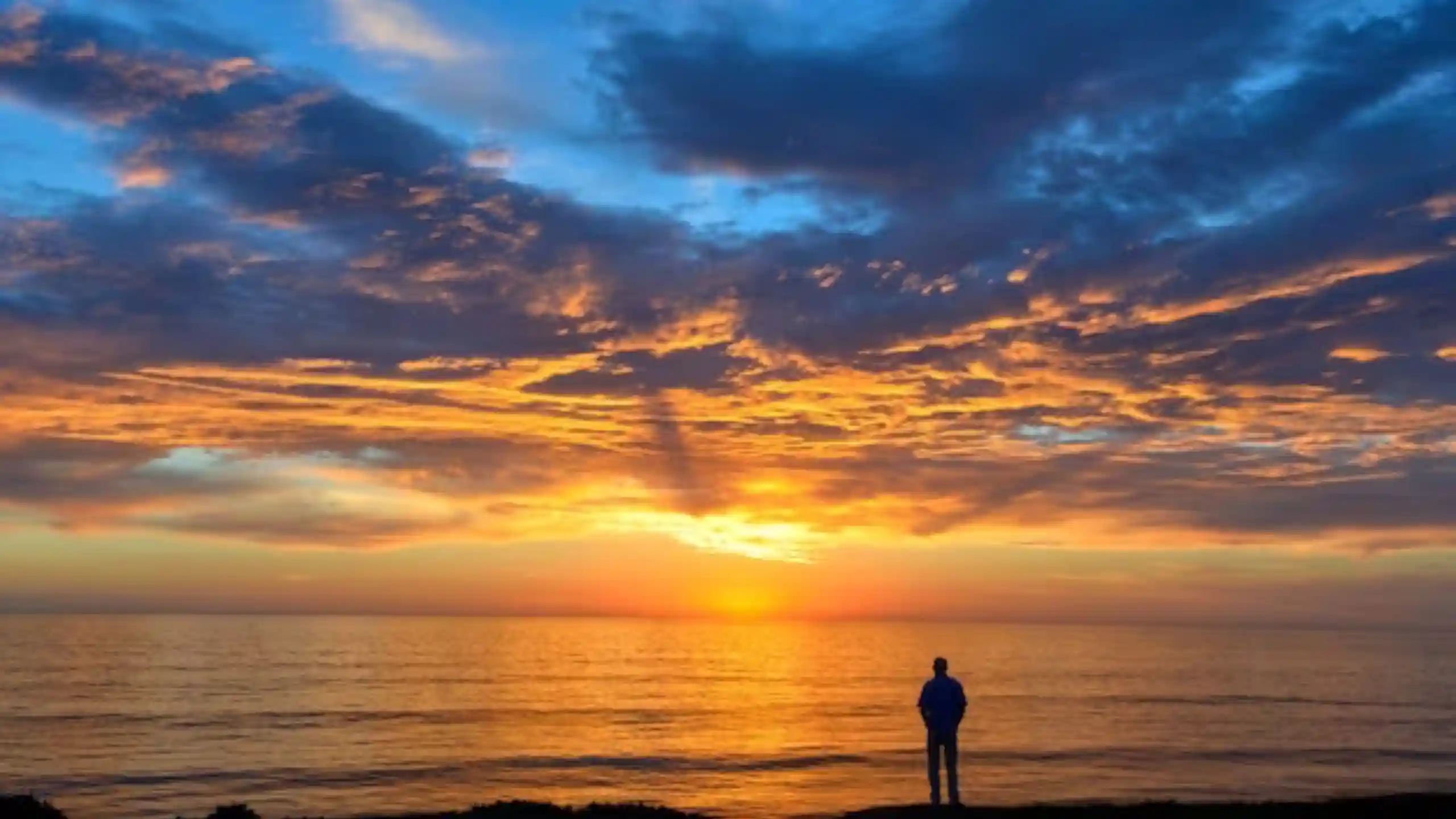
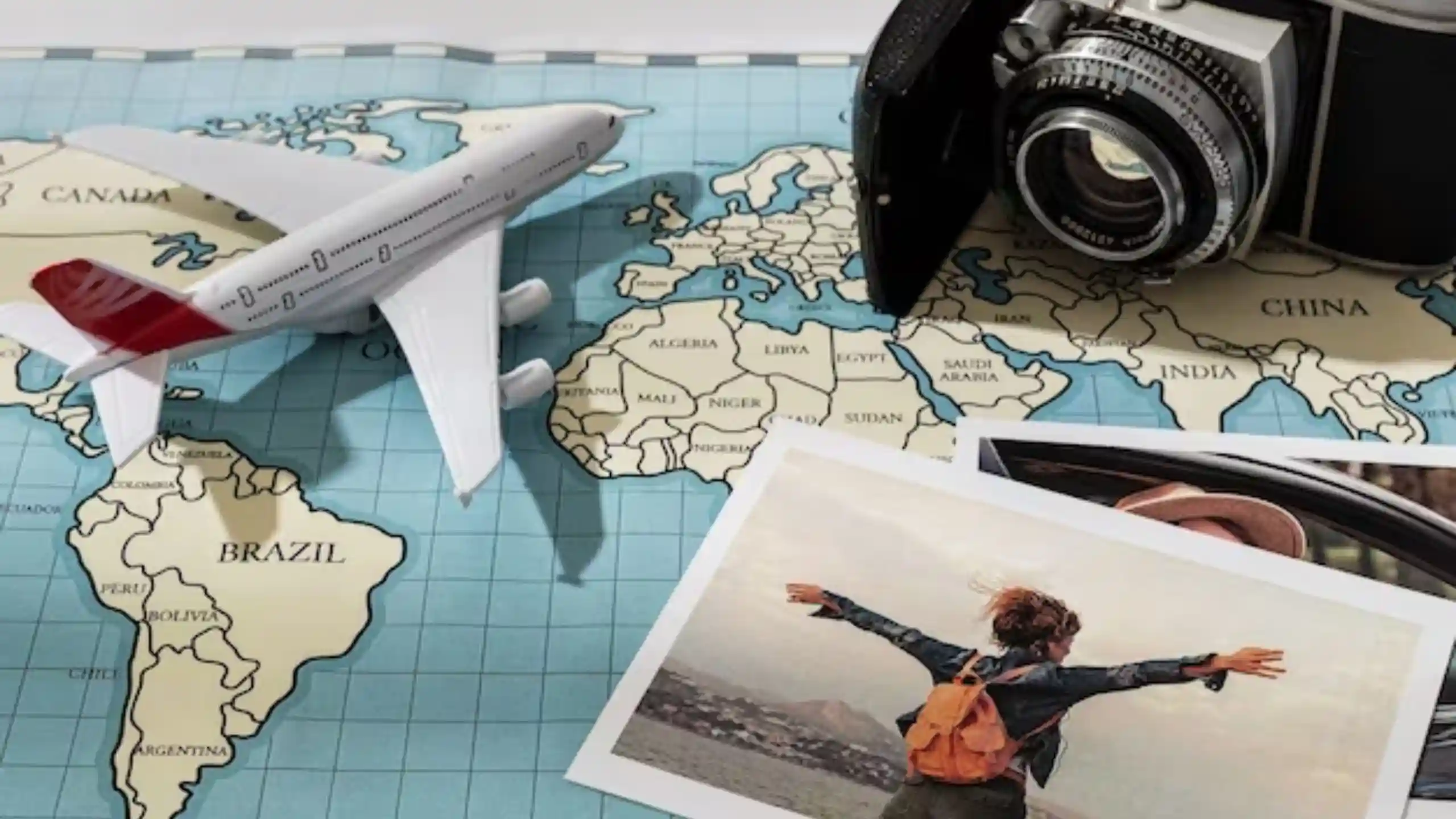

1 comment